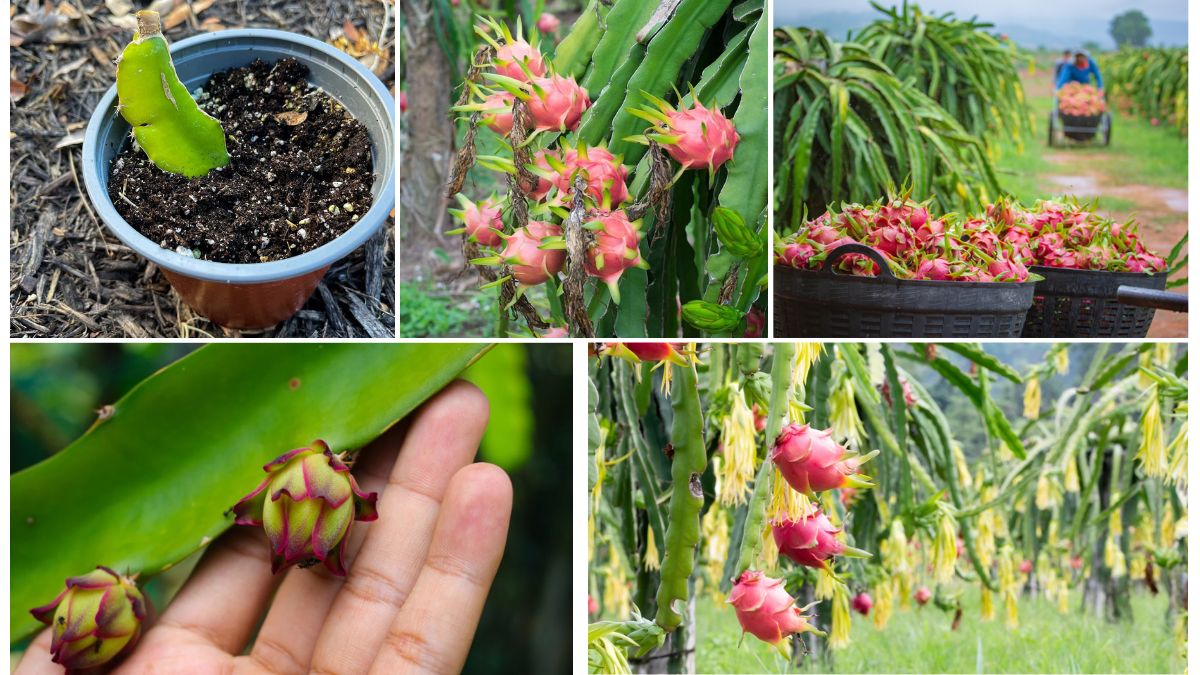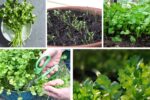Dragon fruit, also known as pitaya or pitahaya, is one of the most unique and exotic fruits you can grow at home. With its vibrant pink skin, green scales, and nutrient-rich flesh, it’s no wonder this tropical cactus is gaining popularity among gardeners. But while the fruit may be eye-catching, understanding the stages of growth is the real secret to mastering its cultivation. Whether you’re a backyard gardener or an urban grower, knowing what to expect at each phase ensures a healthy plant and a fruitful harvest.
In this guide, we’ll walk you through the seven key stages of dragon fruit growth, how to support the plant at each step, and what signs to look out for as it matures.
Stage 1: Propagation – Starting the Journey
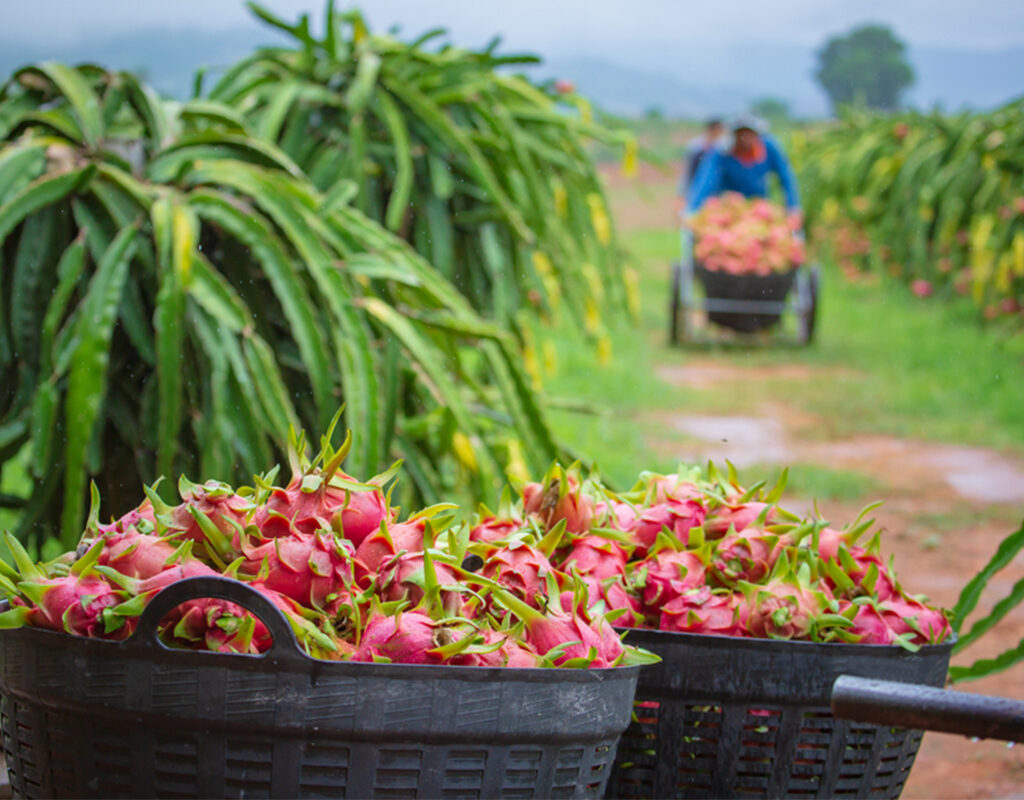
Dragon fruit can be grown either from seeds or stem cuttings, though the latter is far quicker and more reliable.
From Cuttings:
Cuttings are usually 6–12 inches long and must be dried for 5–7 days in a shaded area to allow the cut end to callous. This prevents rot when planted. Once the cut end is dry, plant it in well-draining cactus or sandy soil.
From Seeds:
Growing from seed is slower. Seeds are harvested from ripe fruit, cleaned, and sown shallowly in moist soil. Germination takes 1–4 weeks, and growth is initially very slow.
Key Care Tips:
- Ensure the soil remains moist but not soggy.
- Provide bright, indirect sunlight.
- Maintain warmth (20–30°C is ideal).
Stage 2: Root Development – Laying the Foundation
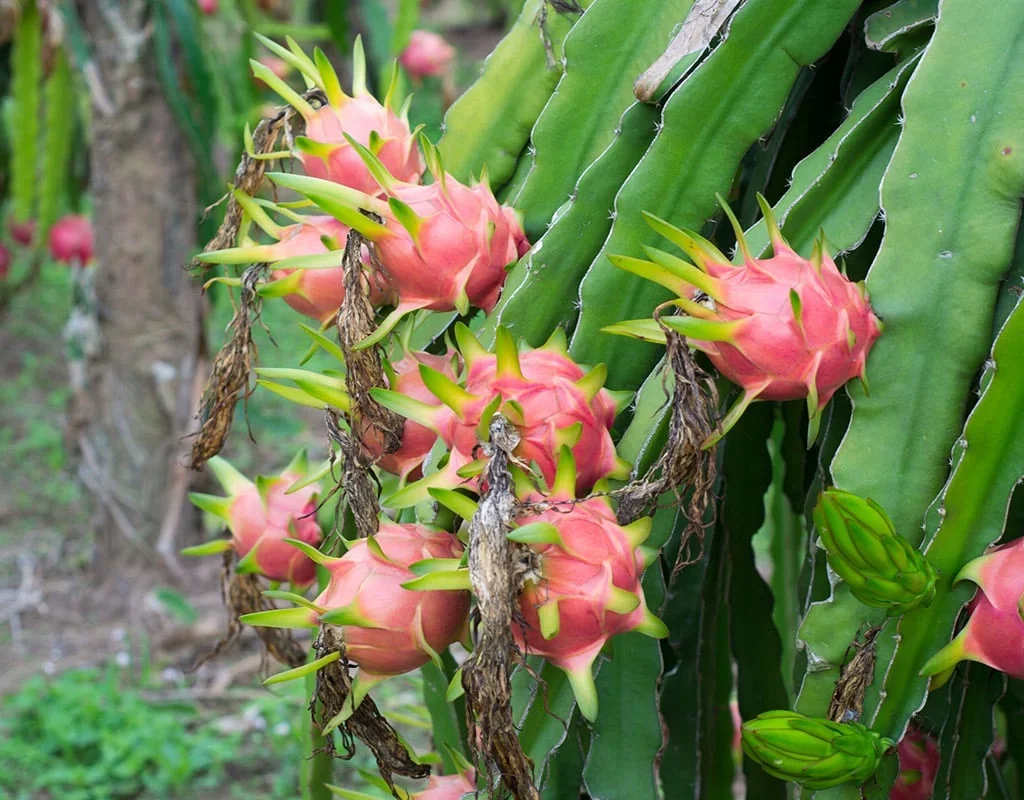
After planting, the first 2–6 weeks are dedicated to root development. This is a vital phase because a strong root system anchors the plant and supports nutrient uptake.
Signs of Root Growth:
- New green shoots emerging from the cutting or seedling.
- The cutting begins to stand firm and upright on its own.
Support Strategies:
- Avoid overwatering; water only when the top inch of soil feels dry.
- Ensure proper drainage to prevent root rot.
- Keep the plant warm and in filtered light.
Stage 3: Vegetative Growth – Building the Plant
This is the fastest-growing stage once roots are established. The plant produces long, fleshy, three-sided stems (called “cladodes”) that resemble cacti arms.
What to Expect:
- New branches (or arms) growing vertically.
- A significant increase in height and mass.
- The need for structural support (like a trellis or pole).
Key Care Tips:
- Fertilize monthly with a balanced 10-10-10 or 16-16-16 NPK fertilizer.
- Prune side shoots to encourage vertical growth.
- Support stems to avoid breakage from weight.
Stage 4: Climbing and Maturation – Getting Ready to Bloom
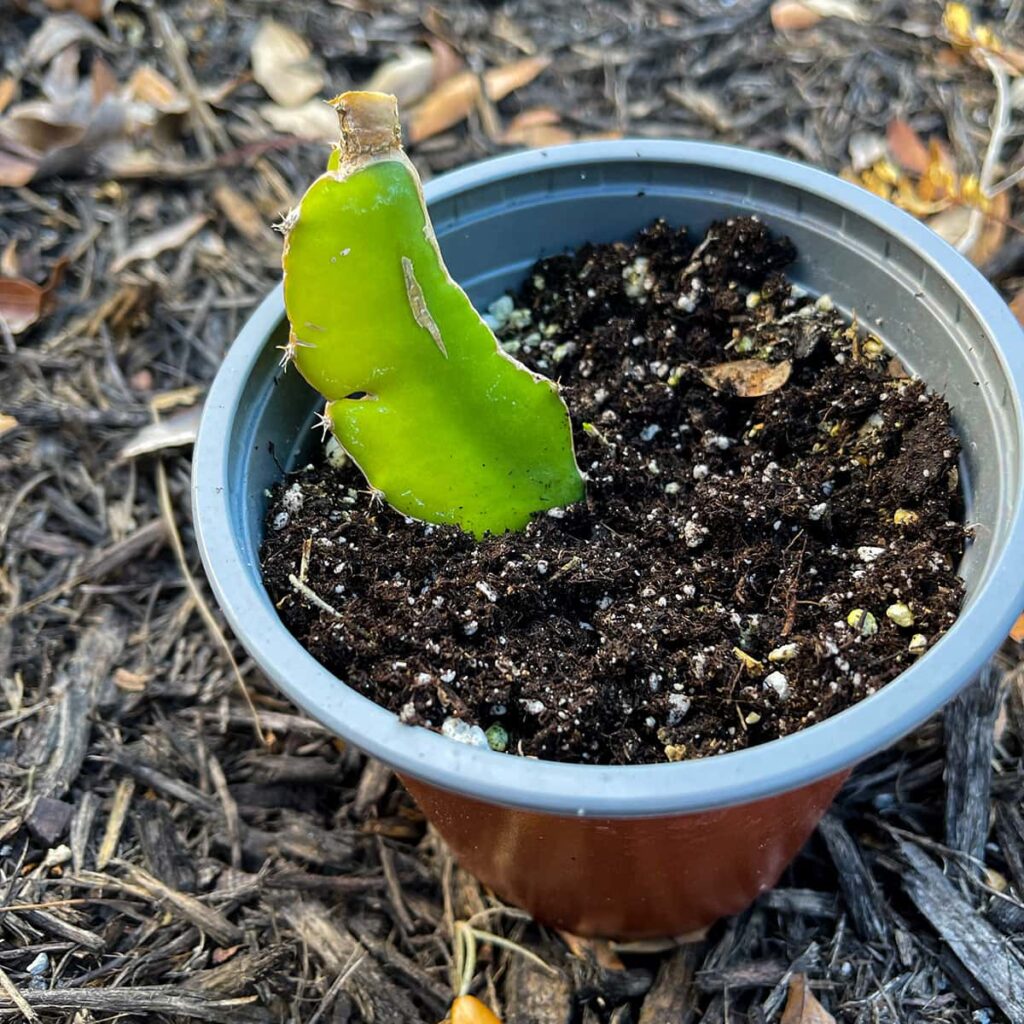
As the dragon fruit grows, it behaves like a climbing cactus. It will naturally start to seek upward support to mimic its wild habit of climbing trees.
Characteristics:
- Vigorous upward and outward stem growth.
- Development of aerial roots (help the plant attach to supports).
- Readiness for flowering within 6–12 months (cuttings) or 2–3 years (seeds).
Support Strategies:
- Provide a strong vertical post or trellis.
- Use cloth ties to gently train stems upward.
- Keep applying fertilizer and ensure at least 6 hours of sunlight daily.
Stage 5: Bud Formation – The Flowering Phase
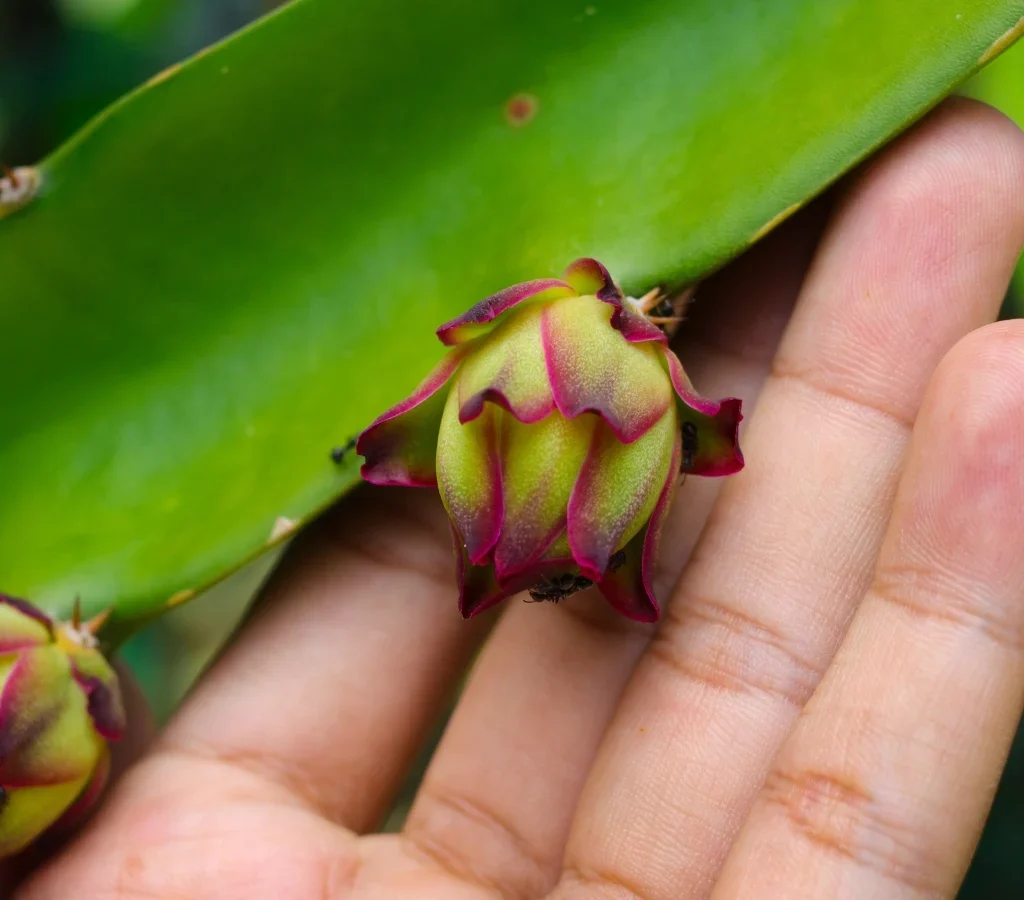
Flower buds begin to form typically in the late spring or early summer, especially after the plant reaches 1–1.5 meters in height.
Identifying Buds:
- Small swellings appear on the stem’s edge.
- Buds grow rapidly into large, elongated flower tubes.
Flower Traits:
- Dragon fruit flowers are nocturnal and bloom for just one night.
- Large, white, fragrant blossoms attract bats and moths for pollination.
Flowering Tips:
- Make sure the plant receives adequate phosphorus (P) and potassium (K).
- Avoid high nitrogen fertilizers during this stage.
- Water deeply but reduce frequency to stress the plant slightly, encouraging blooms.
Stage 6: Pollination and Fruit Set – Creating the Fruit
Pollination is crucial. Some varieties are self-fertile, while others need cross-pollination with another plant.
How It Happens:
- Natural pollinators (bats, moths) are rare in urban settings, so hand pollination is often necessary.
- Use a soft brush to transfer pollen from the anthers to the stigma during bloom (10 PM to 2 AM).
After Pollination:
- A successful pollinated flower will wilt, and within a few days, the base will begin to swell and turn into fruit.
- The flower dies back completely as the fruit develops.
Key Considerations:
- Tag pollinated flowers to track fruit development.
- Avoid touching the young fruit to prevent damage.
Stage 7: Fruit Maturation and Harvesting – The Final Reward
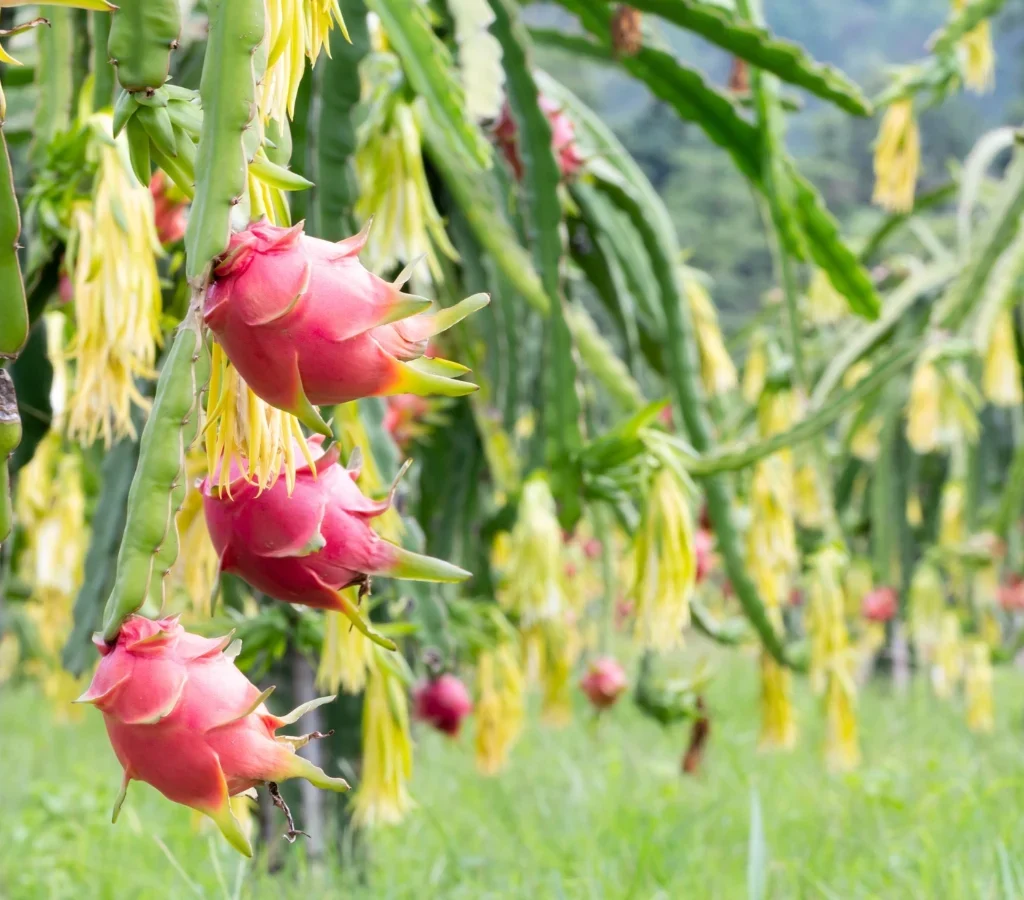
Dragon fruit takes 30–50 days from pollination to reach full maturity, depending on temperature and plant health.
Ripening Signs:
- Skin changes from green to bright pink or red.
- Fruit size is typically 4–6 inches long, weighing 300–600 grams.
- Fruit gives slightly under gentle pressure.
Harvesting:
- Use a clean knife or scissors to cut the fruit with a small portion of stem attached.
- Avoid twisting or pulling the fruit off, as this can damage the plant.
Post-Harvest Tip:
- Store fruit in a cool, dry place or refrigerate for up to a week.
Bonus Stage: Rest and Repeat – Multiple Fruiting Cycles
In warm climates, dragon fruit can produce up to 4–6 harvests per year. After the first fruiting cycle, the plant briefly rests, and then the flowering cycle begins again.
To Maximize Yields:
- Prune old or unproductive stems.
- Refresh soil nutrients post-harvest with compost or organic fertilizer.
- Ensure sunlight exposure stays consistent.
Common Challenges by Growth Stage
| Stage | Problem | Solution |
|---|---|---|
| Root Development | Root rot | Use well-drained soil, water less |
| Vegetative Growth | Weak stems | Use strong supports, prune regularly |
| Flowering | No blooms | Reduce nitrogen, increase P and K |
| Pollination | Flowers drop | Hand-pollinate at night |
| Fruit Set | Fruit shrivels | Ensure consistent watering and nutrients |
Conclusion
Growing dragon fruit is a rewarding journey, especially when you understand each phase of the plant’s life cycle. From propagation to harvesting, every stage presents its own challenges and joys. With proper care, your dragon fruit plant can thrive in containers, balconies, rooftops, or gardens—making it a perfect choice for gardeners in all kinds of spaces.
By learning what to expect and how to support your dragon fruit through every stage of its growth, you’re not just cultivating a plant—you’re cultivating success.
